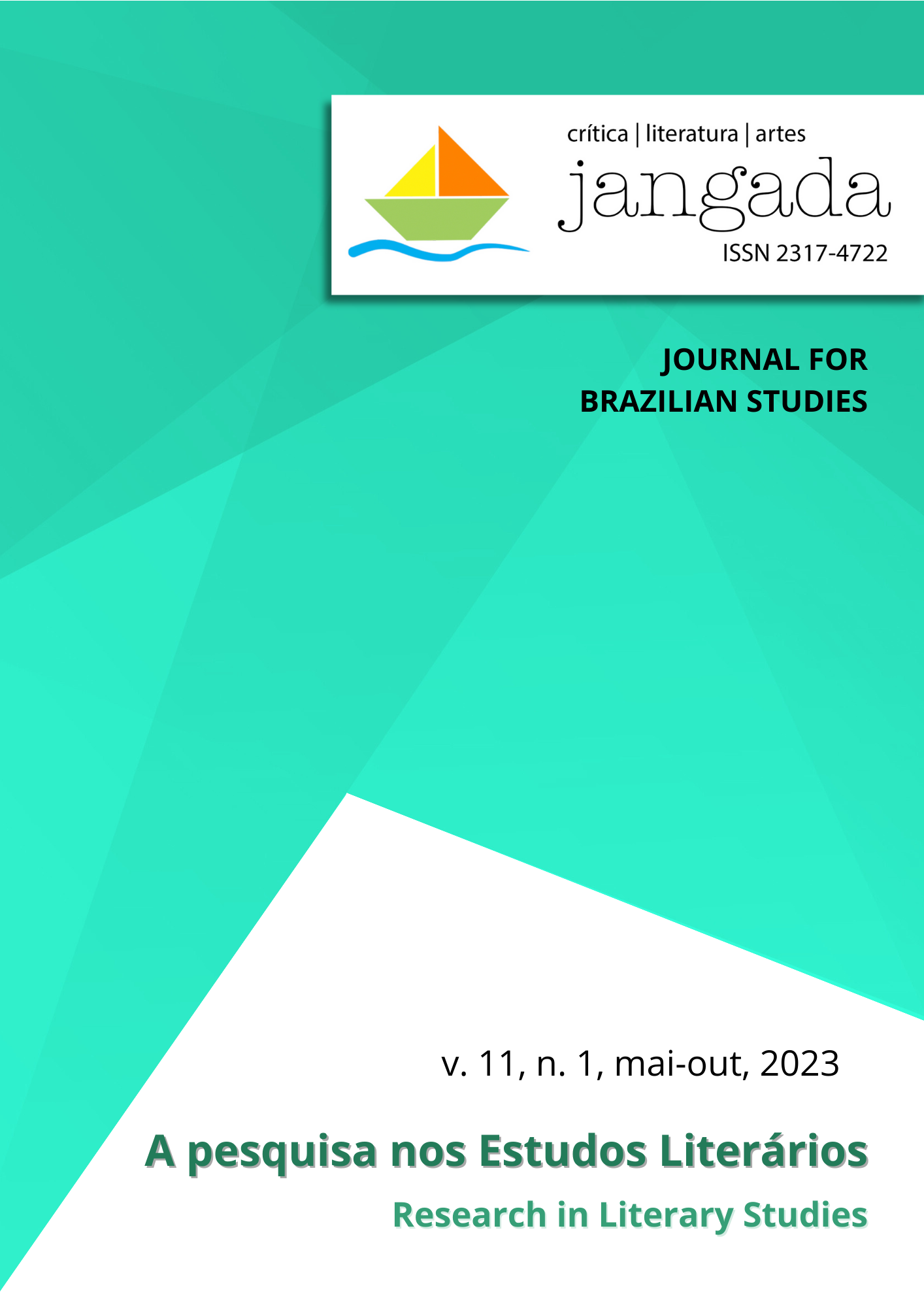'Sobre héroes y tumbas': um romance de personagem
DOI:
https://doi.org/10.35921/jangada.v11i1.544Keywords:
argentine literature, science, Ernesto Sabato, CharacterAbstract
The Argentine writer Ernesto Sabato (1911-2011) believed that the novel should be structured from the subject, focusing on his moods, feelings and ideas, presenting himself with a new logic detached from the rationalist influence established by the appreciation of thought. scientific. For the Argentine author, while science could renounce the “I”, the novel was unable to do so. And it was this difference that allowed literature to more easily perceive the existence of a richer and more complex reality. Therefore, for Sabato, the characters were considered fundamental pieces in the construction of a novel, since he saw them as creations of the author's imagination capable of superimposing writing on reality, making it even more powerful and impactful. In addition, it is the characters who give voice to many of Sabato's ideas, especially those related to literature and his way of seeing the modern world, according to him, hostage to the advances of science and technology. Ideas that often appear first in his essays and then in his novels. Based on these ideas, this article analyzes how the characters were constructed in Sobre héroes y tumbas (1961), pointing out the strategies used by the author, as well as establishing points of contact between his conceptions about the literary and scientific universe. To substantiate this analysis, in addition to part of his critical fortune, some of the essays written by Sabato were used as a reference, in particular El escritor y sus fantasmas (1963).
Downloads
References
BARRERA, Trinidad L. La estrutura de Abaddón el exterminador. Sevilla: Escuela de Estudios Hispano-Americanos de Sevilla, 1982.
BARRERA, Trinidad. Ernesto Sábato. In: 100 escritores del siglo XX. Ámbito Hispánico (Narrativas). Barcelona: RBS libros, S.A., 2014 (Edição Kindle).
BUREK, Tomasz. Sobre héroes y tumbas, torbellino de realidad. In: Epica dadora de eternidad: Sábato en la crítica americana y europea. Selección y edición de A. M. VazquezBigi. Buenos Aires: Sudamericana, 1985.
CALABRESE, Elisa T. Personajes de Abaddón – Máscara e identidade. In: Epica dadora de eternidad: Sábato en la crítica americana y europea. Selección y edición de A. M. VazquezBigi. Buenos Aires: Sudamericana, 1985.
CANDIDO, Antonio [et al]. A personagem do romance. In: A personagem de ficção. São Paulo: Perspectiva, 2014 (Coleção debates).
CATANIA, Carlos. Genio y figura de Ernesto Sabato. Buenos Aires: Editorial Universitaria de Buenos Aires, 1997.
CIARLO, Hector. El universo de Sabato. Cuadernos Hispanoamericanos. Madrid: Instituto de Cooperación Iberoamericana, núm. 391-393 (enero-marzo 1983).
CONSTENLA, Julia. Sabato, el hombre. La biografía definitiva. Buenos Aires: Sudamerica, 2011.
DAPAZ-STROUT, Lilia. Símbolos primordiales, mito e historia en Sobre héroes y tumbas. In: Epica dadora de eternidad: Sábato en la crítica americana y europea. Selección y edición de A. M. VazquezBigi. Buenos Aires: Sudamericana, 1985.
DEOUD, Ivana Melhem. A narrativa de Ernesto Sábato: alguns comentários sobre Juan Pablo Castel e Fernando Vidal Olmos. In: REVETTI, Graciela (org); FANTINI, Marli (org). Olhares críticos: estudos de literatura e cultura. Belo Horizonte: UFMG, 2009.
NEYRA, Jorge. Ernesto Sábato. Buenos Aires: Ed. Culturales Argentinas, 1973.
SÁBATO, Ernesto. El escritor y sus fantasmas. 1ª ed. Buenos Aires: Aguilar, 1963.
________. Sobre héroes y tumbas. In: Obra Completa (Narrativa). Edición a cargo de Ricardo Ibarlucía. Buenos Aires: Seix Barral, 1997.
________. Uno y el universo. Buenos Aires: Seix Barral, 2006 (Edición especial para La Nación).
________. Heterodoxia. Buenos Aires: Seix Barral, 2011 (Edición especial para La Nación).








